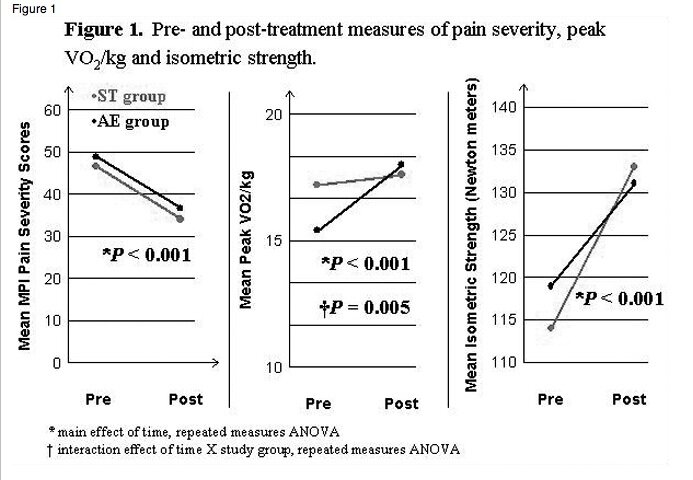“Fibromyalgia patients did not experience an exacerbation of pain symptoms while undergoing strength training and the clinical outcomes regarding pain severity were the same as they were for fibromyalgia patients who participated in an aerobic training program,”—W. Michael Hooten, MD
“Fibromyalgia patients did not experience an exacerbation of pain symptoms while undergoing strength training, and the clinical outcomes regarding pain severity were the same as they were for fibromyalgia patients who participated in an aerobic training program,” lead researcher W. Michael Hooten, MD, an anesthesiologist at the Mayo Clinic College of Medicine in Rochester, Minnesota, told MSKreport.com. “It expands the range of exercise options we can recommend for people with fibromyalgia. Some fibromyalgia patients didn’t like aerobic exercise for various reasons but may like strength training, so now they will have a choice.” Along with medication, regular exercise and education about the disease are important in the management of fibromyalgia.The study randomized 71 fibromyalgia patients to a 3-week, outpatient pain rehabilitation program of either strength training or aerobic training. Patients in the strength training group engaged in upper and lower body strength training on alternating days; patients in the aerobic exercise group used a treadmill or stationary bicycle for 30 to 60 minutes a day.
The study’s primary outcome measure was the pain severity subscale of the Multidimensional Pain Inventory (MPI). All patients underwent pre- and post-treatment isometric knee extensor strength testing of the dominant leg using a dynamometer. Similarly, all patients underwent pre- and post-treatment testing of peak aerobic capacity with an incremental protocol on an electronically-braked cycle ergometer.
Table 1. Means and standard deviations post treatment outcome measures.
| Measure | Strength Group Post-treatment | Aerobic Group Post-treatment | Post-treatment Between Group Differences ψ |
| Pain Severity | 34±12 | 36±12 | P > 0.1 |
| Peak V02/kg | 17.6±4.8 | 18.0±3.2 | P > 0.1 |
| Isometirc Strength | 133±40 | 131±36 | P > 0.1 |
Adapted from: Hooten WM, Timm HJ, Kerkvliet JL, et al. Randomized trial of strength training vs. aerobic exercise for fibromyalgia, Presented at: 2008 Annual Meeting of the American Society of Anesthesiologists; October 18-22, 2008; Orlando, Fla. Presentation No. A15531

Pain outcomes similar in both arms
“The broad array of pain related outcomes was similar for both groups,” Dr. Hooten said. However, he noted that patients who participated in the aerobic exercise program experienced significantly greater gains in peak VO2/kg and showed significant improvements in strength, presumably the result of daily aerobic exercise.
Reference
1. Hooten WM, Timm HJ, Kerkvliet JL, et al. Randomized trial of strength training vs aerobic exercise for fibromyalgia, Presented at: 2008 annual meeting of the American Society of Anesthesiologists; October 18-22, 2008; Orlando, Fla. Presentation A1553.






